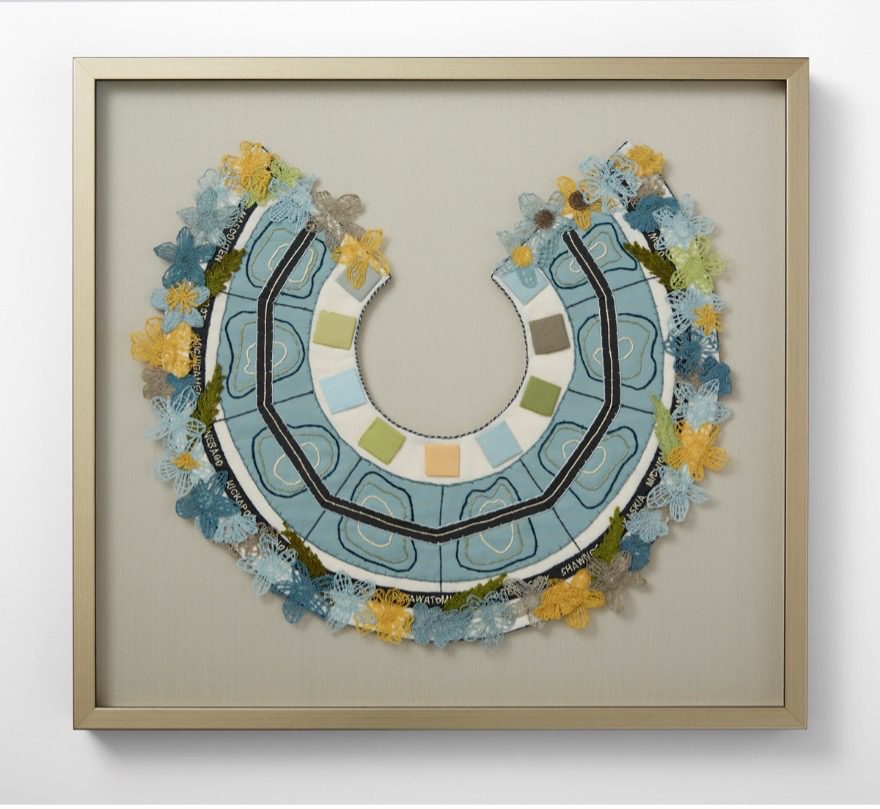
Calumet Region III: Symbolic representation of the hemi-marsh and fragmented landscape
Cotton thread, cotton ground, collaged fabric
Mounted on linen
Science Art exists on a continuum. At one end of the spectrum is scientific illustration. This is art in the service of science used to teach concepts or visualize big ideas. At the other end is art inspired by science: plenty of art flash but short on science. As a 10-year practitioner of science art, and a former science avoider, I aim for the middle of this continuum: using my toolkit as a fine artist, I want to communicate accurate scientific concepts and to express a human connection, knowing that I have about three seconds to capture someone’s attention. I do this by implementing control of texture, color, line quality, value (light and dark), symmetry or asymmetry, space, shape and form. As the first artist-in-residence for the Wetlands Initiative (TWI) my art centers on creating artwork that highlights the achievements, techniques, and challenges that their ecologists face in restoring the Midwest’s lost wetlands.
In particular, I have focused my attention on TWI’s restoration efforts in the Calumet region, a complex of wetlands at the southern end of Lake Michigan stretching across Chicago’s Southeast Side and Northwest Indiana. The Industrial Age led to vast and rapid filling and altering of that landscape. Today the Calumet region is scattered with remnant pieces of its rich wetlands heritage amid the remnants of heavy industry and a busy transportation corridor.
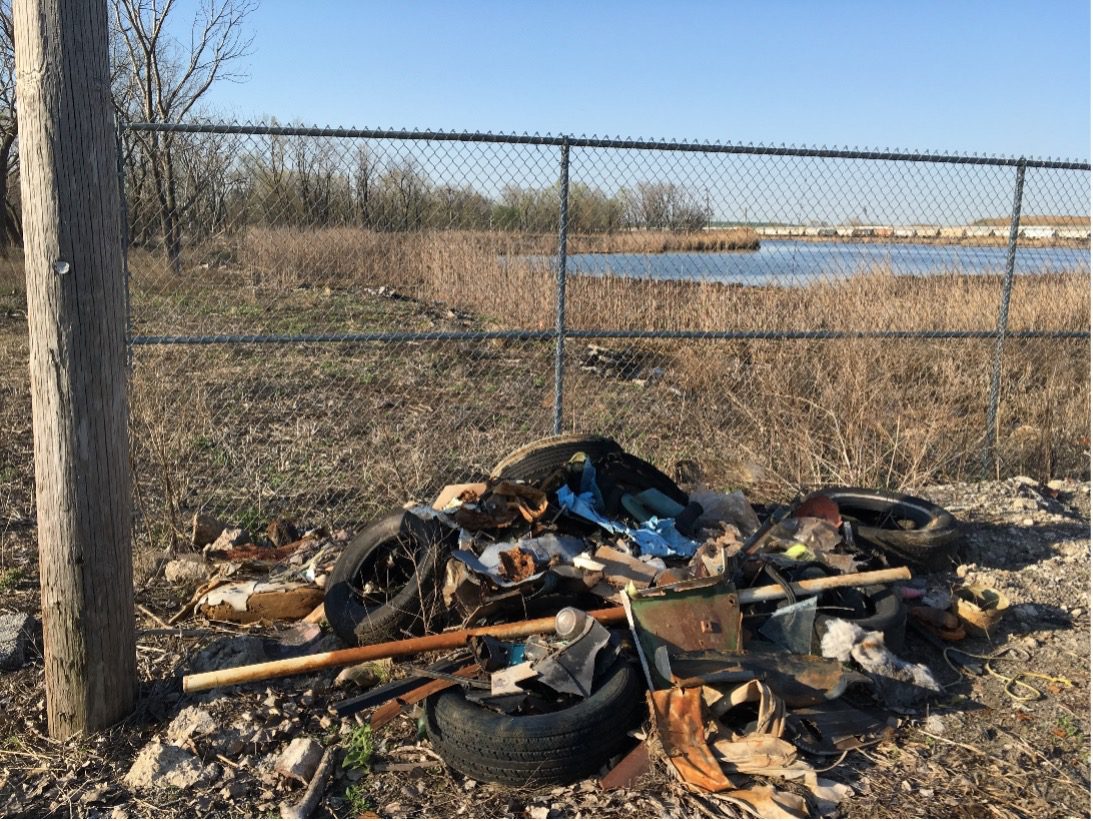
Indian Ridge Marsh Before Restoration
Photo Credit Gary Sullivan
This area, with its huge challenges and equally large promise, inspired me to begin my work here. It was a huge creative and intellectual challenge to figure out how to express the rich combination of art, ecology and engineering and to capture the realities of carrying out conservation work on land situated in the Rust Belt. TWI, in partnership with other organizations, has achieved huge gains in healing some of these damaged ecosystems and returning them to welcoming, publicly accessible natural areas that support rare birds and wildlife.
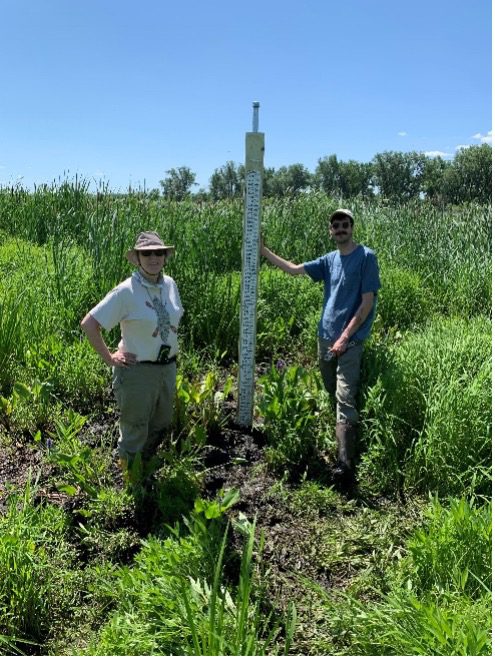
Installing Water Gauge; the artist/author and Harry Kuttner
Photo Credit Gary Sullivan
On my first day working as TWI’s resident artist, I found myself in the bright June sunlight, standing ankle-deep in mud and helping to install water gages with the crew. I met the TWI team at their site along the West Branch of the Little Calumet River floodplain corridor. Restoration begins with bringing back a more-natural hydrology.
I listened to the discussions between Dr. Gary Sullivan, TWI’s senior ecologist; Harry Kuttner, Calumet coordinator; and Jim Monchak, Geospatial Analyst. They were discussing last season’s eradication of an aggressive invasive species of reed grass and the coming season’s plans for planting plugs (seedlings) of native species. In the background the drone of the expressway blended with bird calls and buzzing pollinators.
This place was alive with energy and not just the kind pulsating through the Com Ed pilons above our heads. At my feet, were native plants: rattlesnake master, hybrid cattail, hard-stem bulrush, pickerel weed, and sweet flag to only name a few. All are thriving in the space created by the removal of invasive plants the previous fall. Having nearly fallen in the muck that morning, I also realized I was falling hard for wetland field work in general and this region in particular.
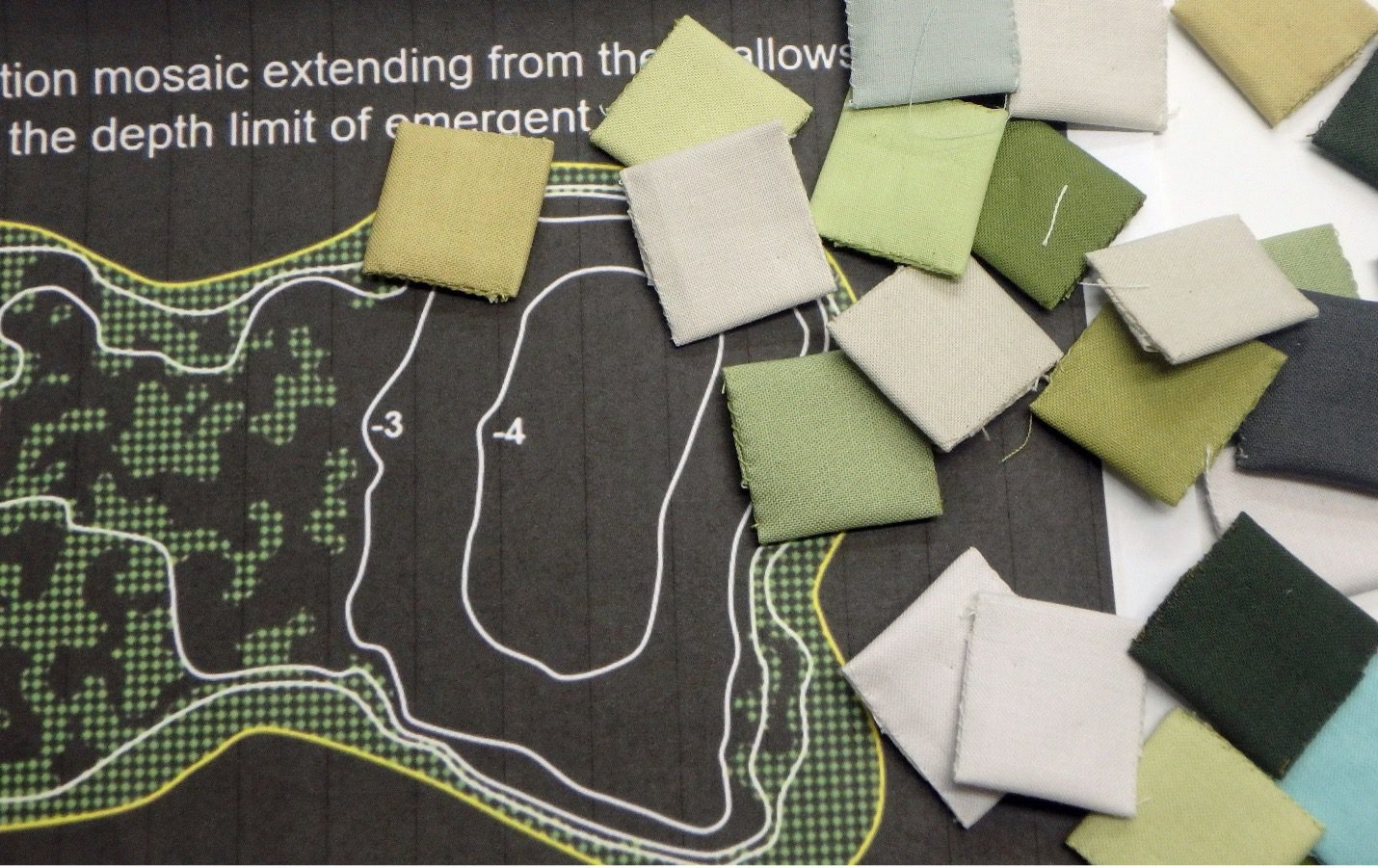
Gary Sullivan’s Hemi-Marsh Map
Working alongside the crew that day, I learned about the importance of hemi-marsh habitat (a marsh approximately equal parts open water and emergent vegetation) and how the parcels of land in the region are no longer connected by the original hydrology that once dominated this area. TWI works to re-sculpt the land (literally with bulldozers!) and installs water control structures to mimic the natural cycles of ebb and flow in these isolated parcels of wetlands. The restoration process is very much a partnership between a deep understanding of wetland ecology and engineering prowess. When these processes are returned, nature takes over and the wetlands begin to function as they were intended . . . to clean water and support a diverse group of plants, insects, animals, birds, and even microbes unique to this region.
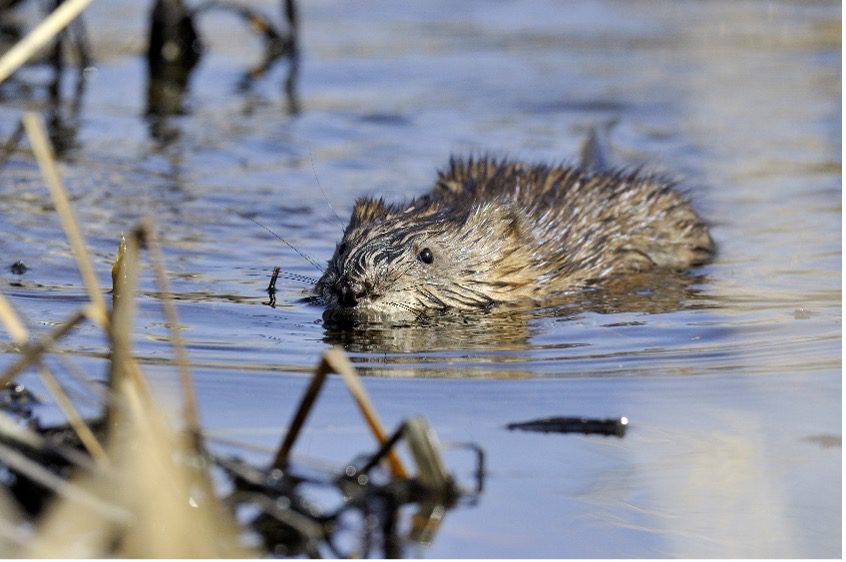
Muskrat
Photo Credit Gary Sullivan
Once the right water conditions are restored, the hemi-marsh is created primarily by the activity of muskrats. They do so by cutting down marsh vegetation in characteristic patterns to create their homes and feeding “platforms” within the aquatic landscape. They are the hemi-marsh architects. Beavers also create deeper channels for traveling, sometimes cutting them across land to create canals to a food or building resource.
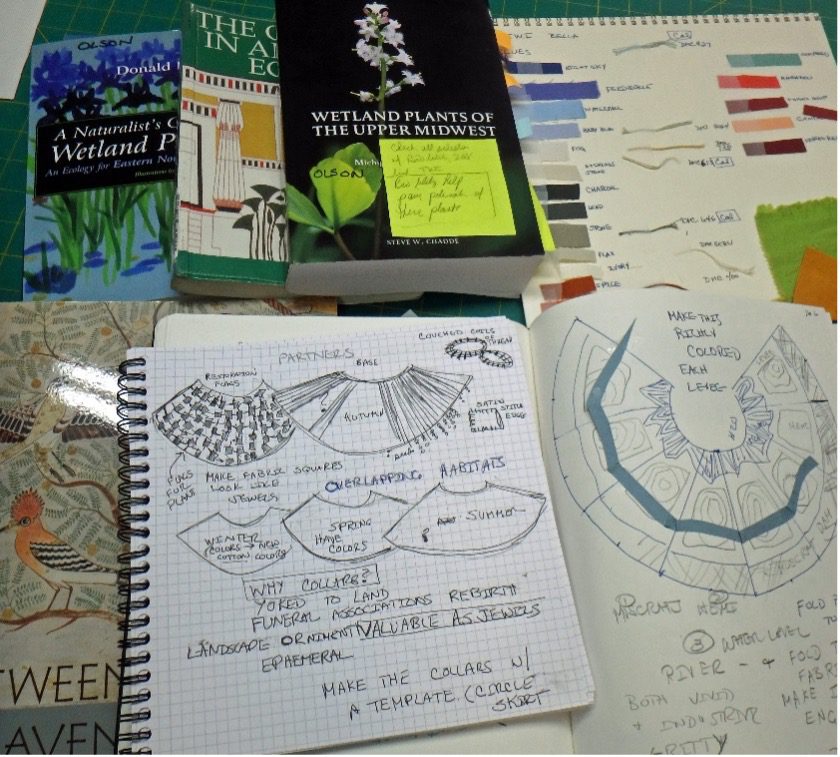
Combining science research and generating visual ideas
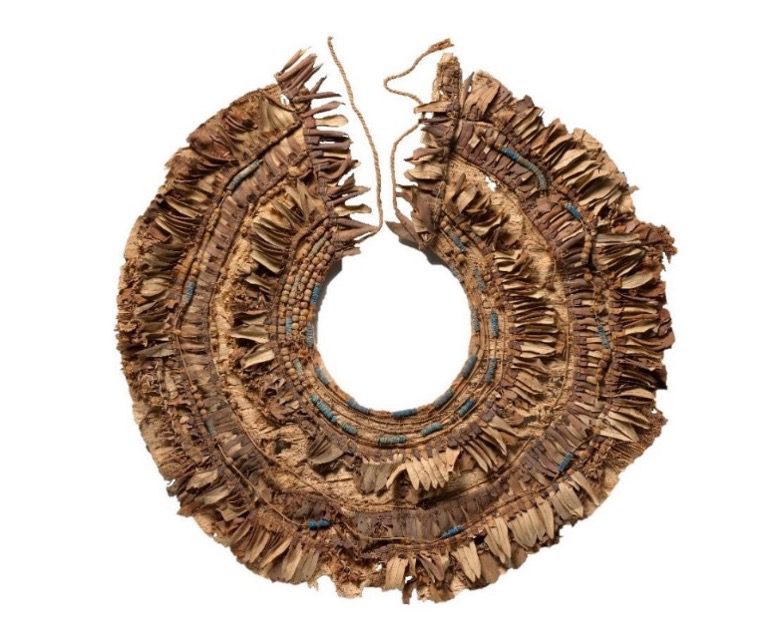
King Tut collar from the MET Museum
Early in my visual research exploring the online collection at the Metropolitan Museum of Art, I stumbled upon a 3000-year-old floral collar that was buried with King Tut. I was familiar with ancient Egyptian depictions of bejeweled collars on images of kings and queens. What I did not know is that royalty was buried with elaborately fashioned fresh flower collars. We are not the only people in history to use fresh flowers to honor our dead.
Egyptian tomb builders supplied all earthly tools and supplies, assuming the afterlife would mimic life on earth. This collar was a representation of the birth, death, and rebirth of the recently deceased. The format of my textile collars represents two symbolic ideas: the idea that wetland restoration is also a form of birth, death, and rebirth. And the collar (a broken circle) is also a stand-in for the ways we humans have broken the cycles of nature.
The other intriguing connection to the project is that the funeral collars are, in intent at least, a garment intended to be worn. I used this symbolism to suggest a very personal connection between viewers and wetland restoration.
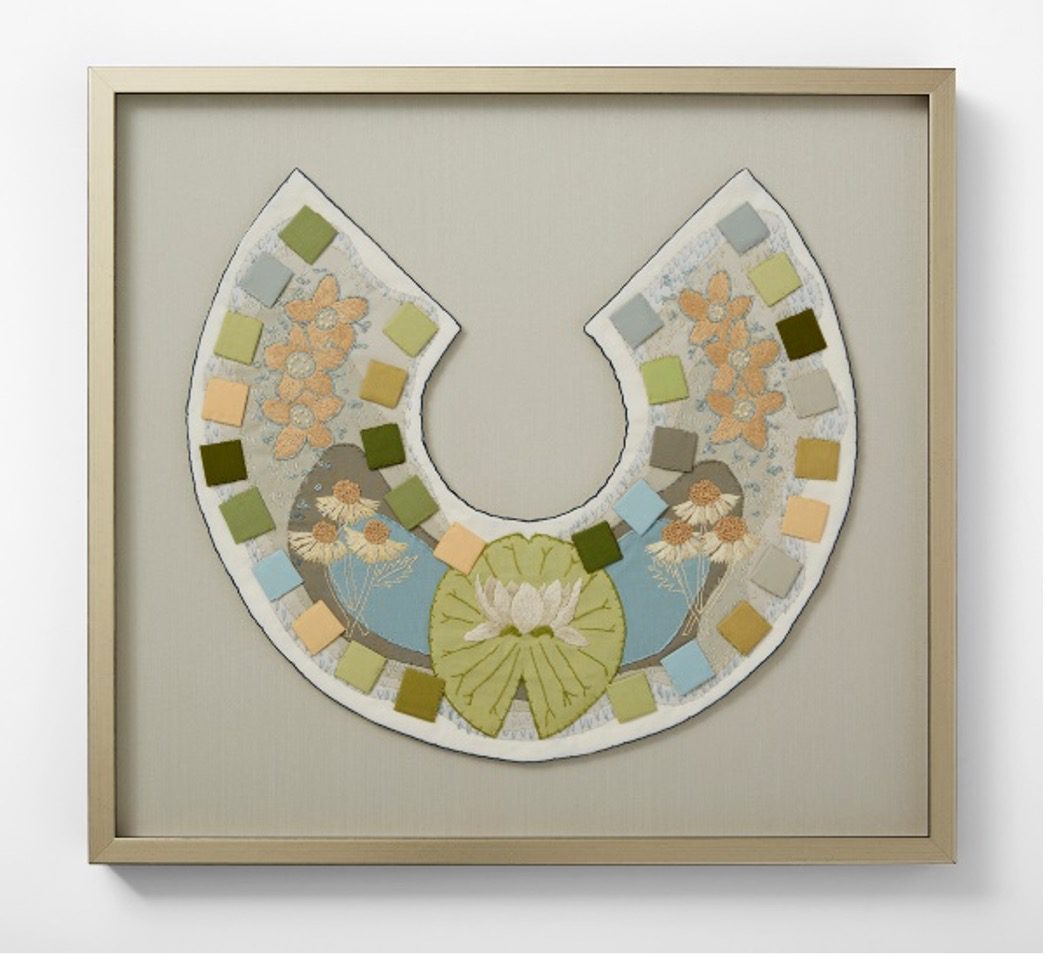
Calumet Region I: Textile collar representing the Calumet hemi-marsh
Cotton thread, cotton ground, collaged fabric
Mounted on linen
The central theme in this piece (Calumet Region I) is the creation of hemi-marsh conditions. The different depths found in Gary’s map are the foundation of the piece. I’ve stitched flora commonly found in a restored hemi-marsh: American lotus, sneezeweed, and marsh marigold. The small squares in the art piece represent the idea that the remnant wetlands are scattered and disconnected. In the Calumet region, untangling ownership of these parcels is complex, requiring patience and persistence. As work continues, secretive marsh birds like the Illinois State-endangered Common Gallinule and Black-crowned Night-Heron, pollinators and other insects, amphibians and fish are beginning to establish themselves in the region.
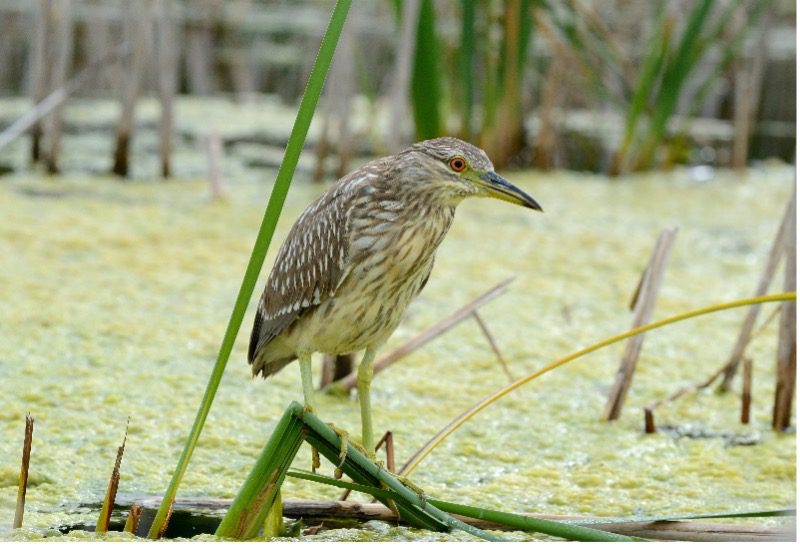
Photo of a Juvenile Black-Crowned Night-Heron bird resting on a reed above green marsh water
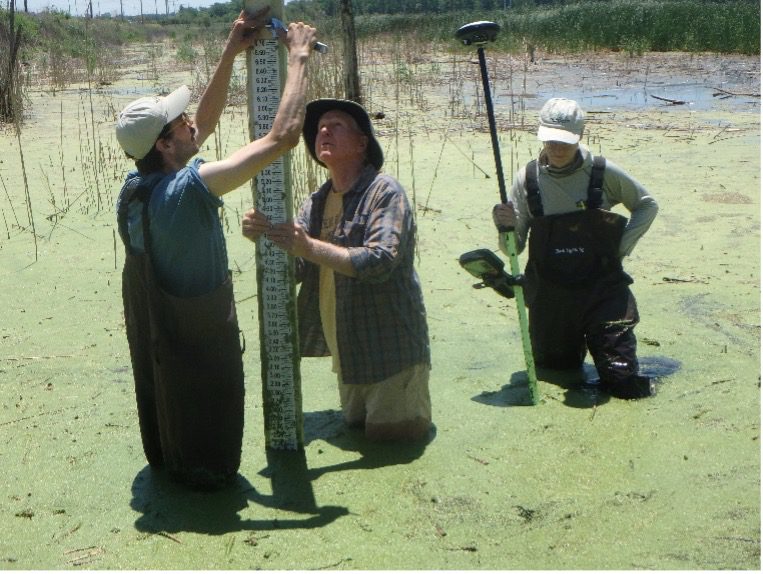
Slide of hip waders
Photo Credit Lindsay Olson
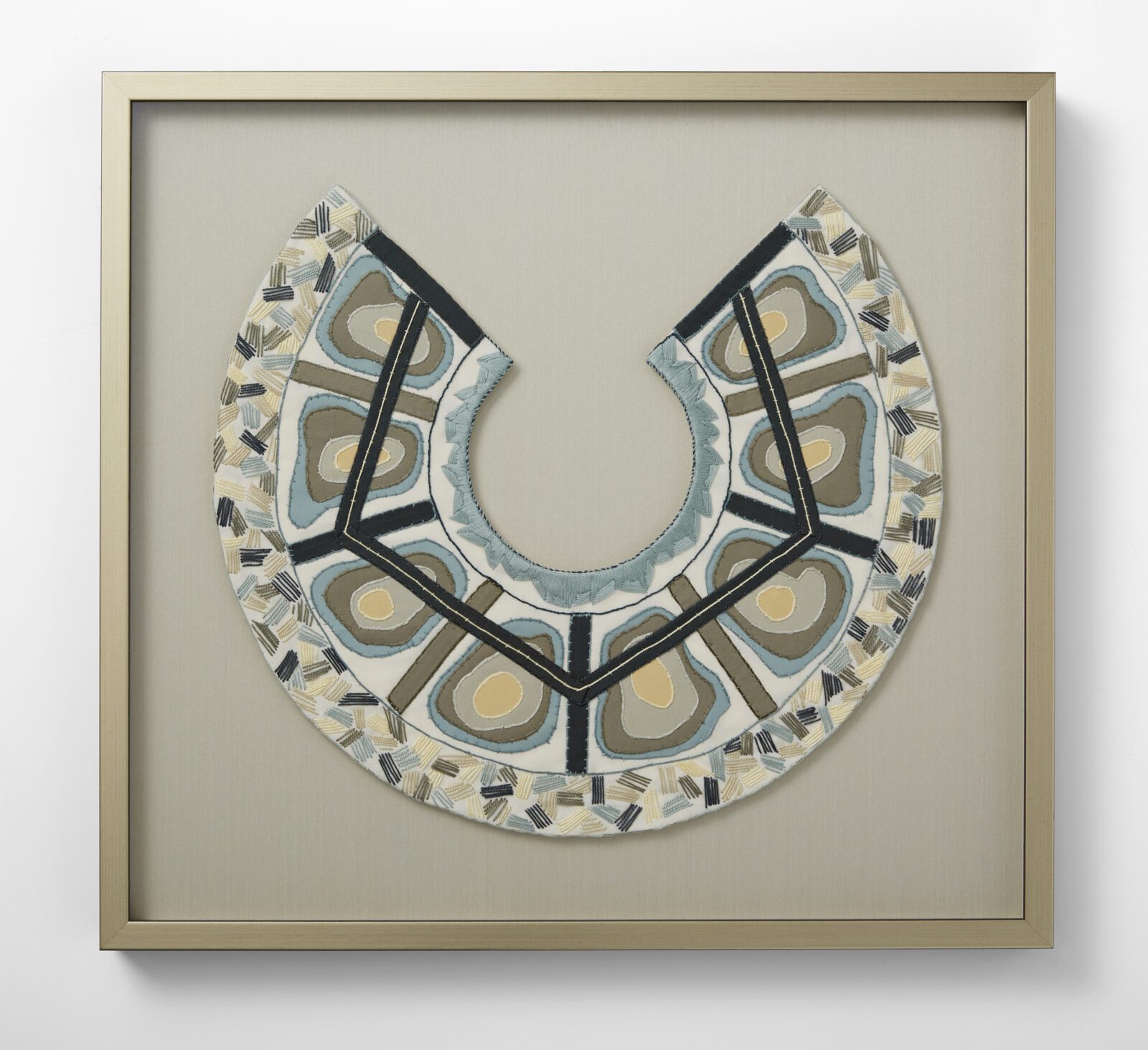
Calumet Region II: Textile collar representing the Calumet hemi-marsh
Cotton thread, cotton ground, collaged fabric
Mounted on linen
In this piece (Calumet II), I used the radiating lines to express the divided parcels of land and the many expressways and levees that crisscross the region. There is a suggestion of the work of beavers and muskrats as well. The neckline of the piece is a nod to the water control structures installed by TWI that will allow site managers to raise and lower water levels, mimicking natural water fluctuations. This fluctuation is needed to sustain healthy, functional hemi-marsh
My intention is not to create a photo-realistic portrait of a restored wetland but to find ways to create an impression of the process of restoration within an urban, industrial setting, including the manmade elements like roads that surround and sometimes cut through wetland areas. I wanted the work to look deliberately “designed” and to quietly express the restoration efforts. I’ve also chosen muted colors in the artwork instead of the often-flamboyant colors of flora in a restored wetland. Wetland restoration takes decades of slow, incremental work to achieve results that may not be fully realized in one person’s lifetime.
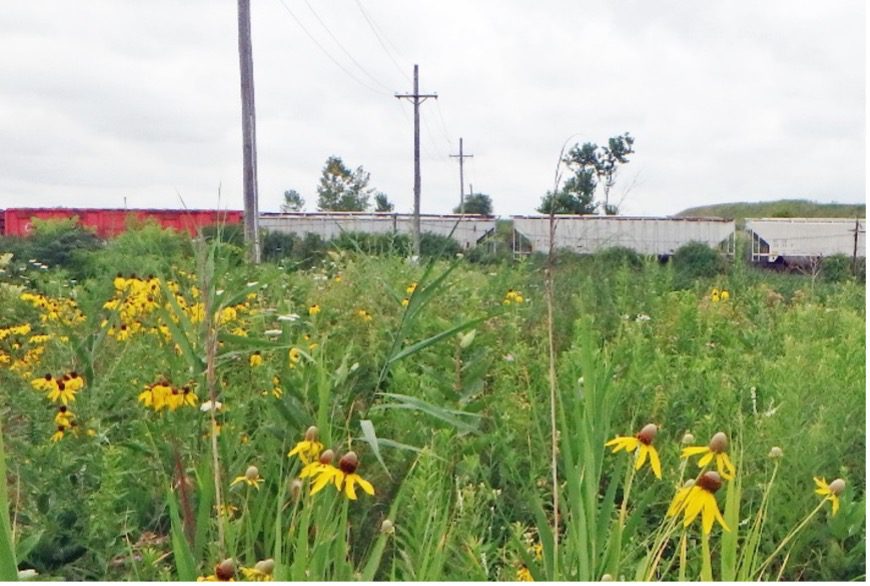
Indian Ridge Marsh
Photo credit: Lindsay Olson
Working in an area of deep human disturbance, TWI is restoring a wetland over a layer of slag, the industrial waste from steel manufacturing and a material widely found in this area.
Even though this project is in its early stages, this stunningly original project is yielding a significant change in plant and animal diversity: secretive marsh birds, pollinators and plants are returning to the land.
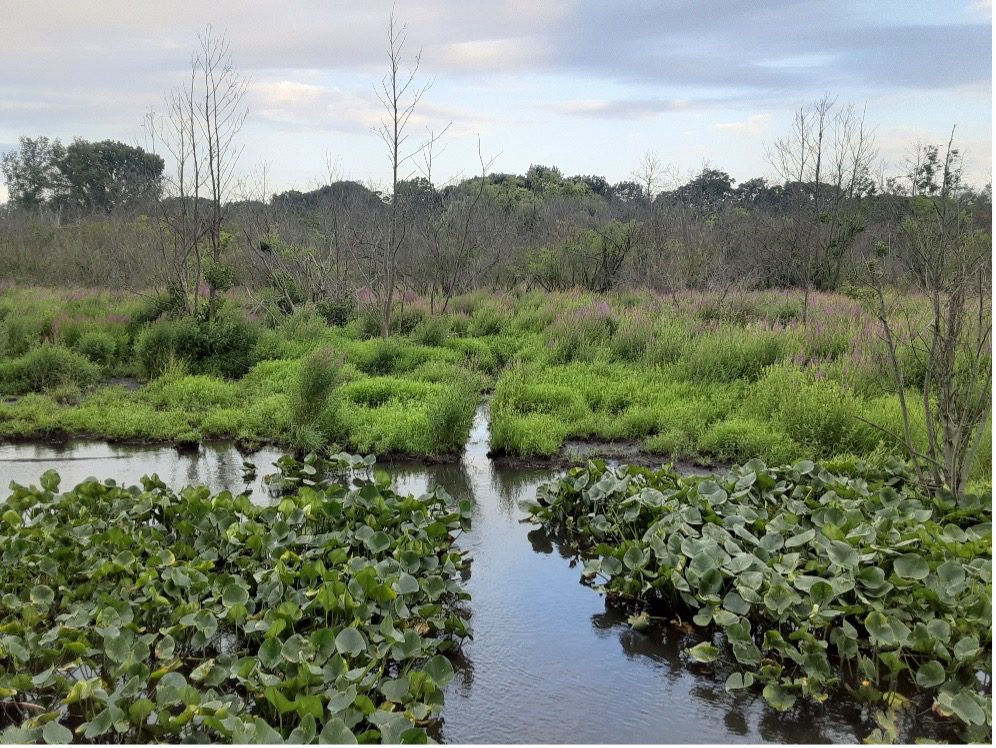
Dixon Waterfowl Refuge
An example of decades of restoration efforts
Photo Credit Lindsay Olson
To create a project, I construct a deliberately uncomfortable place myself. I entered the residency with TWI not knowing anything about the process of wetland restoration. With the generous help of their staff, I have been able to participate in and witness the creation of functional wetlands clawed back from formerly degraded landscapes. The Calumet region is not just an industrial landscape from here to there. I’ve seen what happens when people implement big dreams and join forces. I am deeply grateful for this opportunity to work with TWI and use my art to help spread the word about how they are reclaiming these parcels of land and to help others connect with this hopeful work.
Website: Lindsayolsonart.com
Instagram: @lindsayolson816
The post “Our Once and Future Wetlands: My Experience as The Artist-In-Residence with The Wetlands Initiative” appeared first on Illinois Science Council.

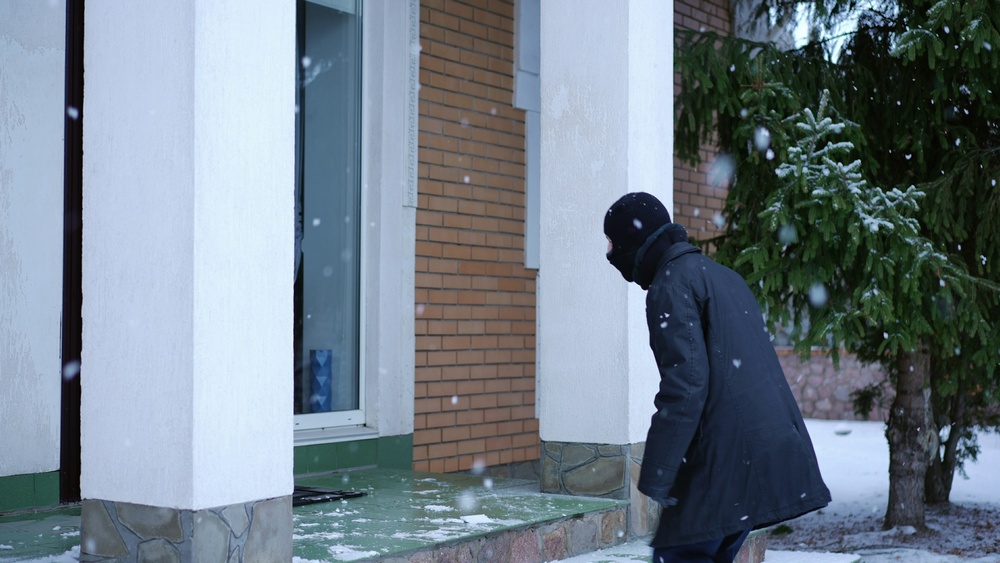







Leave a Comment